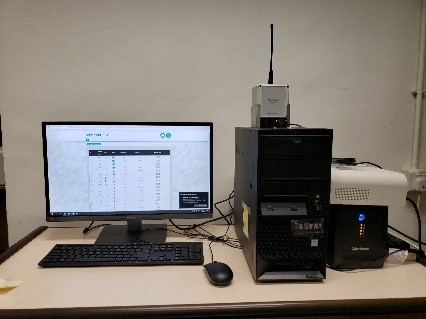
Environmental control
Having regard to international standards such as BS EN 16893:2018, BS 4971:2017 and the local circumstances, GRS has adopted a set of climatic conditions for the preservation of archival materials of different material types as set out below :
| Material | Temperature | Relative Humidity |
|---|---|---|
|
Paper |
average at 18oC with not more than ±1oC fluctuation in 24 hours |
average at 50% with maximum fluctuation of ±2% in 24 hours |
|
Photographic films |
average at 2oC with not more than ±1oC fluctuation in 24 hours |
average at 35% with maximum fluctuation of ±2% in 24 hours |
|
Microfilm (black-and-white) |
average at 13oC with not more than ±1oC fluctuation in 24 hours |
average at 35% with maximum fluctuation of ±2% in 24 hours |
|
Magnetic Tapes (data backup, video, audio) |
average at 15oC with not more than ±1oC fluctuation in 24 hours |
average at 40% with maximum fluctuation of ±2% in 24 hours |
|
Optical Discs (CD, DVD, etc) |
average at 15oC with not more than ±1oC fluctuation in 24 hours |
average at 40% with maximum fluctuation of ±2% in 24 hours |
|
Organic Material in general (including leather, parchment, paintings, etc) |
average at 18oC with not more than ±1oC fluctuation in 24 hours |
average at 50% with maximum fluctuation of ±2% in 24 hours |
It should be noted that, owing to the large difference between storage and access environment, photographic films, microfilms, magnetic tapes and optical discs kept in above-mentioned storage conditions must be acclimatised either by gradual change of temperature and/or relative humidity or staging at an intermediate condition between the two environments after retrieval from or before returning to the repositories.
Merely providing air-conditioned space to meet the average temperature and relative humidity figures is not enough in keeping the recommended storage environment. Dehumidifiers must be installed to control the relative humidity in the archival storage effectively. Furthermore, effective filters must be installed in the air-conditioning system to reduce pollutants and dust in the air. The lighting in the storage must be ultraviolet-free. The lighting intensity and duration should also be minimised as far as possible. It is preferable to use rooms with no windows at all for archival materials storage. However, if there are already windows, they must be blocked for natural light, sealed and insulated to minimise the effect of ambient climatic fluctuations on storage environment, and equipped with facility to ensure the security of archive.
The environmental condition of archival storage has to be managed by monitoring and control. For example, the archival repositories of GRS are continuously monitored with a 24-hour operating real-time wireless data-logging system that records, analyses and displays the climatic data of each monitoring point and sends alarms to responsible personnel when the climatic condition deviates from pre-set limits. Remedial action should be taken to put the climatic condition back to the desirable settings.
